Ticket to Rheda
By James Martin
Have you ever got on a bus? No, not your typical big red British bus, an experience which I often describe as being trapped in a tube full of the breath and sweat of other people in equal human misery. Nothing like that. I’m speaking about one of those lovely air-conditioned and Wi-Fi-enabled buses with lots of room and comfy seats that take you for less than €5 ($5.48) from Carcassonne to Quillan. If you haven’t, let me give you a ticket to ride.
A few summers ago, in that baking heat familiar to those visitors to the Aude, I went outside during a thunderstorm to watch the light show and the inevitable rain that followed. I managed to glimpse at the sheer terrifying exhilaration of lightning as it tore above the roofs of the 14th-century houses opposite me. A question dawned upon me: what would this have been like for those medieval people? What did 13th-century John the shit-shoveler make of this storm? Was it divine retribution for society’s misdeeds, or was nature taking its course? Little did I know this question would shape my research for years to come. A bus journey doesn’t have to be unpleasant but educational. You are afforded time to look out the window and see towns and villages that, until then, you have driven past them as though they never existed in your world. As the bus pulled into Lycee (High School) Jacques Ruffié at Limoux, I wondered about old John and his medieval denizens.
Limoux currently sits around 25 km south of Carcassonne, with a population of around 10,000. Like many towns in the Aude, its origins are ultimately of Gallo-Roman origin, with a villa excavated in the Flassian area in 1983. M. Fonds-Lamothe postulates that Limoux began its life in Flassian, citing various medieval charters, including one from St Louis, that give a joint name for the town – Flacian-Limoux. In 844, the land in which Limoux sits today is referenced as being held by the abbots of St Hilaire, yet a century later, at least from 950, the Trencavel Counts of Carcassonne and the Razes hold this land.
While the area remained relatively undeveloped throughout this period, the 10th century marked an age of relative prosperity, with the route from Carcassonne to Quillan, which roughly follows to this day an ancient Celtic road, bringing trade and commerce deep into the upper Aude valley. The period of prosperity followed a period of war against the moors of Spain, who had by the 8th century occupied most of the Aude valley. A castle at Flassian, upon the La Canal hill overlooking Les Pontils, had been razed by the Moors; however, by the 10th century, it had been restored, and a population resided within its walls. If we were, therefore, looking at the town from John’s perspective in the early 13th century, we would see that Limoux was a city on a hill with two population centers, one at Flassian and another on the banks of the river Aude. Moreover, an increasing number of religious orders were springing up around the riverside town. The Benedictines, Dominicans, Trinitarians (who occupied the site of the Synagogue), Lazarists, Cordeliers, Capuchins, Doctrinaires, the Augustins, the Antonins, the Hospitaliers, the Templars (on the right bank from 1234), the Franciscans, the Ladies of Saint-Claire and the Ladies of Saint Martha are all established within the town from this period onward if not some beforehand. Why the need for so many orders? I would love to answer this fully here; however, in writing an article, one is reminded that this is not an essay – so as Henry VIII said to his wives, I will try not to keep you long. To whet your appetite, though, surely it’s a little more than the so-called Limoux ‘cult of the dead,’ a topic for a further article.
By 1209, Simon de Montfort had sacked our castle on the hill, and during the War of Limoux (1226-1227) in which Roger-Bernard de Foix had refortified the castle and town in support of the towns resistance from northern invaders – resisting in support of their own independence and religious tolerance. Montfort’s lieutenant, Pierre de Voisons, had the entire castle and dwellings demolished, forcing the surviving inhabitants to move towards the river. This was something that the religious orders were not best pleased with, as having hundreds of refugees now settling on your land is mildly inconvenient and might interrupt a good harvest, don’t you know. It should be noted that this scorched earth policy was also continued into neighboring towns.
Espéraza’s origins lay with the former fortification of Garenaud before its walls were demolished and its inhabitants hunted down, the survivors taking refuge at the monastery of Ecclesia Santae Mariae de Asparazanus – today’s market square of Espéraza conforming roughly to the walls of the old monastery. The crusading logic around destroying fortifications and moving the populous to an open-plan town (if indeed they could be bothered doing even that rather than just eradicating the populations) is that future rebellions could be easily crushed with no pesky walls to stop a good slaughter. The Flassian-Limoux model of destroy and relocate was replicated at the siege of Carcassonne in 1240, in which its inhabitants were removed from the walled city in the most inhumane fashion to the undefended flatlands below.
John would have seen a prosperous town at Limoux, a castle on the hill, now turned into a smoldering ruin in which, to survive, he may have had to seek refuge on church land. At the same time, the holy orders had formally complained to the appropriately named king, Louis the Pious, about dealing with so many refugees. Further, a number of edicts were passed by the Bishop of Narbonne that prohibited any form of public dancing, something that the later Bishop of Alet Nicolas Pavillon would rigidly enforce – a joyless time.
As the bus leaves Limoux and passes Alet-les-bains, I wonder if John could have moved here to restart his life. Like Limoux in this period, Alet had a thriving economy before the crusade, a sizeable Jewish population, and a relatively tolerant population of people’s beliefs. Its deep moat and original walls were ancient and dug and rebuilt with money from Spanish nobles. These nobles had fled from the Moorish advance in the 8th century and found refuge at Alet and nearby Rennes-le-Chateau, our final stop. Fortunately, sitting on an air-conditioned bus on a warm day means you don’t have to experience the sights or smells that poor old John did. While throwing your waste from the top window onto the streets below was a crime in those days, open gutters were not. Just imagine the stench and disease.
As I get off the bus at the foot of the winding road up to Rennes-le-Chateau, the chances of John having headed up there are relatively slim; why would he have wanted to? For him, as he crossed the fortified bridge over the River Sals to the various houses that would later form Couiza, he would perhaps have found some comfort in the struggle against the northern invaders. News would have reached him that the household (which was situated close to the Templar holdings in Couiza near the 1212 Church) of Couiza’s premier knight one Guilhem de Baris, more specifically his wife, had offered shelter to a known Cathar, Raymond de Roquefeuil (brother of Bernard Aton de Niort), who had been injured battling the northerners – a sign of Templar/Cathar solidarity?
Looking up towards 13th century Rennes-le-Chateau, or Rhedae, was a shock to our modern-day eyes. Now a place bustling with tourists, shops, and restaurants, 13th-century Rennes was a faded place. The upper and lower towns had lost their former importance in John’s period, and the former stronghold and defense against 8th-century Moorish incursions, built upon remnants of a modest Visigothic town, were in ruins.
They had previously been refortified, and costs were paid for by those wealthy nobles fleeing the Moorish storm in Spain and the southern Languedoc, where those nobles prioritized security over trade. While the lower town of Rhedae fell quickly to the Moors, the upper town held out for a year or so and perhaps saw the archbishops of Narbonne taking refuge in the upper town as the episcopal palace was occupied. As an aside, it is worth noting the legacy of the Moorish conquest; it is not just seen within the food of the area or the Moorish outpost 10km from Rennes, but also within local town and hamlet names, a nearby farm holding still to this day called Maurine – the place of the Moors.
As the Moorish conquest was repelled out of the Languedoc, nobles sought the finer things in life and began to resettle away from the upland forts where it is difficult to transport goods, back down to the old Celtic road towards Quillan in which our modern bus still travels. This furthered the dilapidation of the hilltop towns.
By John’s time, the movement of people to fight in the Levantine crusades had caused a shortage of labor and troops in the area, something that the King of Aragon took to his advantage in 1170/71 when he sacked Rennes. The town would not begin to prosper again for another two centuries when the grandson of Pierre de Voisons, another Pierre, refortified it. We know that the marketplace at Rennes at the start of the 12th century was valued at the same price as that at Burgaragium or Bugarach, slightly higher than Cousanum or Couiza, but would continue to prosper up until a 19th and 20th-century parish priest arrived and who effectively closed the market place down to create a garden (Another story for another time). This garden still exists inside the walls of the restaurant named for it, Le Jardin de Marie, in RLC.
The problem with short bus journeys is that you must get off and continue your day, even though perfect solitude and a date with your imagination have replaced your initial despair. It is difficult to convey the full story in one article in an area coupled with so much history and mystery. Besides, there have been many more journeys since. For now, I hear another storm brewing. I better head out into the alleyway and check. Yep, there’s the lightning.
James Martin is the Official Historian for NightVision on KGRA (Fri 11 PM ET), co-author of Uncharted: A Rediscovered History of Voyages to America Before Columbus, and is currently writing an in-depth three-volume series on the complete history of the Knights Templar. Write to James Martin: info@newrennies.org.
Being an American, geographically challenged, and far away from some of my ancestral lands across the pond, I had little opportunity for travel until well into middle age. I have often said one of the most significant benefits of the TV/film/radio work I’ve been involved in is that it has brought many exciting people into my life. Another huge benefit was the ability to travel and immerse myself in other cultures, providing an invaluable education and massively more understanding.
Indeed, there are so many places I would still like to go, but for the last 20 years or so, I have found myself being drawn back time and time again to southwest France with its rich history and swirling mysteries. The land of Lewis Carroll, author of Through the Looking Glass, the land of Jules Vernes and his Journey to the Center of the Earth, the land of authors Baigent, Leigh, and Lincoln’s Holy Blood, Holy Grail, and, of course, the land of Dan Brown and The Da Vinci Code. What about this magical place caused the late author Tim Wallace-Murphy to dub it the “Glue Pot?”


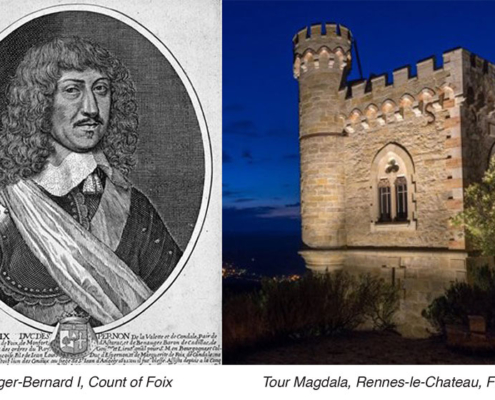
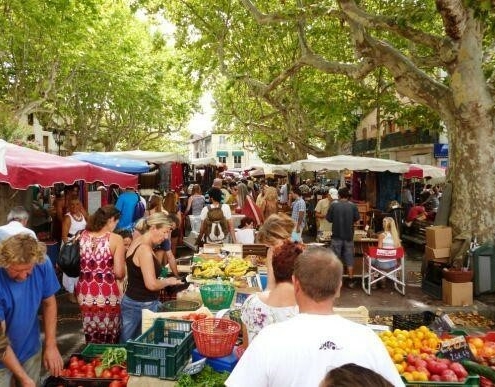
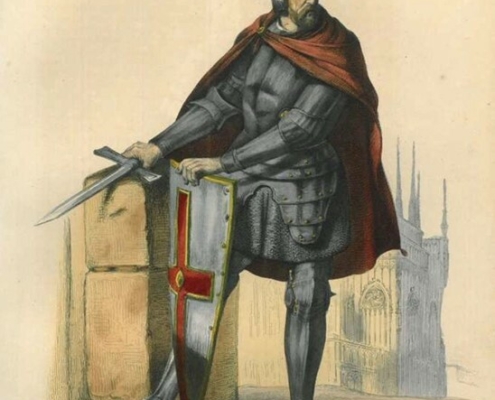
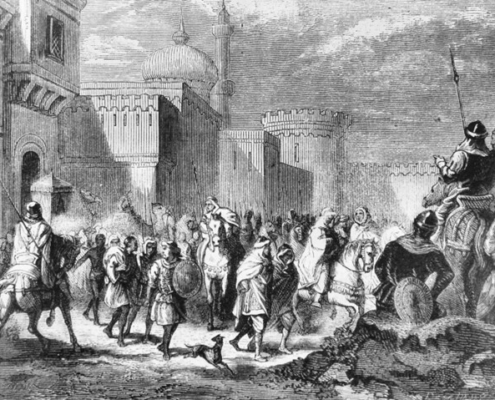
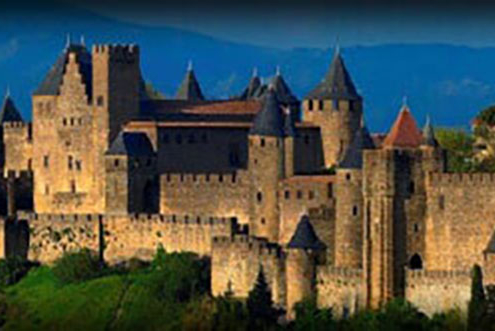



 KGRA Digital Broadcasting
KGRA Digital Broadcasting KGRA Digital Broadcasting
KGRA Digital Broadcasting